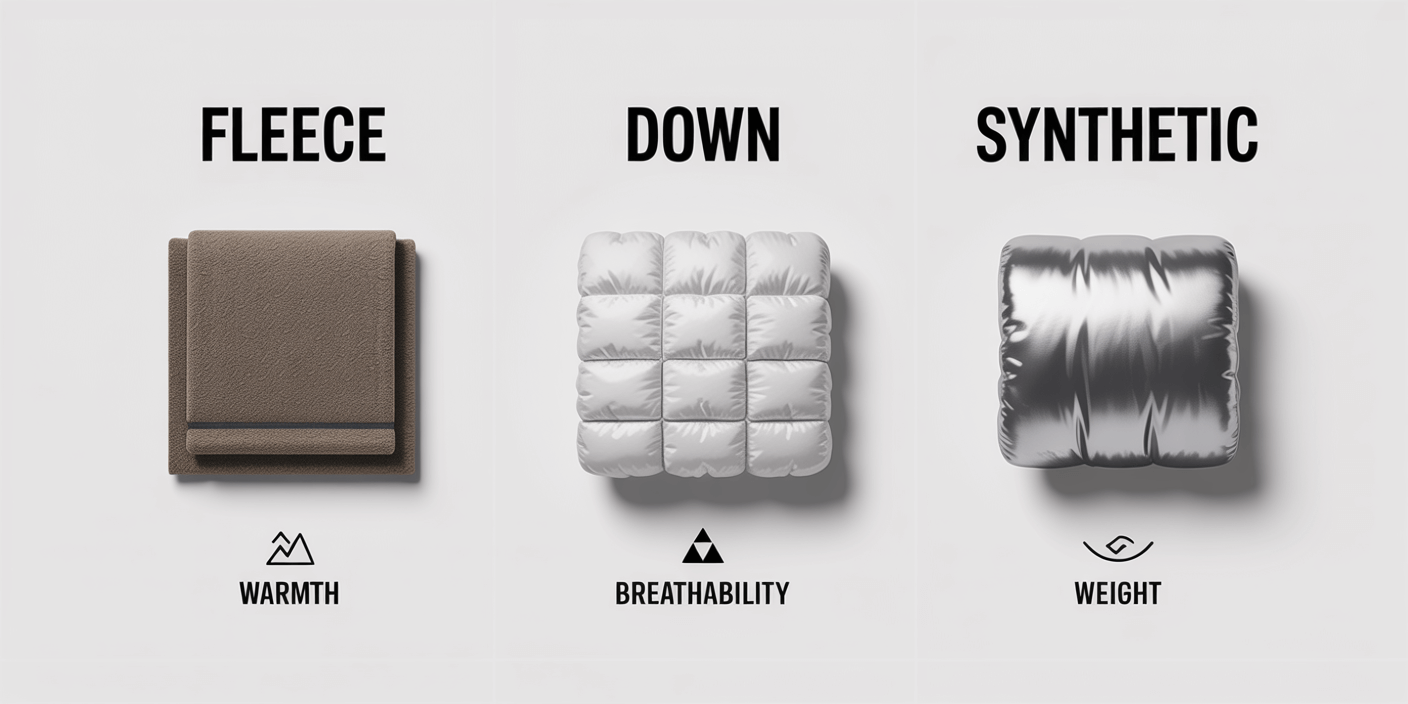When facing extreme cold, the right layering system can make all the difference. Below, we break down the three core layers—base, mid, and shell—and explain how to combine them for unpredictable Nordic conditions.
1. Base Layers: Moisture Management
Your base layer’s primary role is to wick sweat away from the skin. Choose materials that dry quickly and retain warmth when damp:
- Merino Wool: Naturally odor-resistant and temperature-regulating—ideal for multi-day excursions.
- Synthetic Fabrics (Polyester/Polypropylene): Excellent moisture transport but can retain odors over time.
- Fit: Should be snug but not constricting to maximize wicking action.
2. Mid Layers: Insulation and Versatility
The mid layer traps body heat while allowing moisture to escape. Options include:
- Fleece Jackets: Lightweight, breathable, and budget-friendly. Look for Polartec® 100–200 weight depending on temperature.
- Down or Synthetic Insulated Jackets: Down offers superior warmth-to-weight ratio, but synthetic fills (e.g., PrimaLoft®) perform better when wet.
- Softshells: Offer a balance of wind resistance and breathability, suitable for high-output activities.

3. Shell Layers: Weather Protection
The outermost shell shields you from wind, snow, and rain. Key factors:
- Hard Shell: Typically 3-layer build with waterproof membrane (e.g., GORE-TEX, H2No™, Omni-Tech™) that blocks precipitation.
- Soft Shell: Offers enhanced breathability and stretch but lower waterproof rating—best for active pursuits in light snow or wind.
- Features: Adjustable hoods, pit zips for ventilation, glove-compatible zippers, and laminated seams improve performance.
4. Accessory Layers
Don’t forget extremities—hands, head, and feet often lose heat fastest:
- Hats and Balaclavas: Merino or synthetic liners under a windproof shell keep heat in.
- Gloves/Mittens: Layer a thin liner glove beneath a waterproof insulated mitten for maximum dexterity and warmth.
- Socks: Wool or synthetic blends—avoid cotton; consider liner socks beneath a thicker wool pair.
“Proper layering is not about piling on clothes; it’s about combining materials that work together to regulate temperature and moisture.”
— Nordic Outdoor Magazine
5. Seasonal and Activity-Specific Tips
Adjust your layering strategy based on activity level and weather forecasts:
- High-Intensity Activities (Skiing, Snowshoeing): Lean towards lighter base and mid-layers, with a breathable shell to vent sweat.
- Low-Intensity Activities (Photography, Backcountry Camping): Heavier mid-layers (e.g., 800-fill down) and a robust hard shell.
- Temperature Variations: In temperatures just below freezing, a mid-weight fleece might suffice instead of a down jacket.
Final Thoughts
Successful layering requires understanding each piece’s function and how they work together. By choosing the proper base, mid, and shell—along with suitable accessories—you’ll stay warm, dry, and comfortable even in the harshest Nordic conditions.

